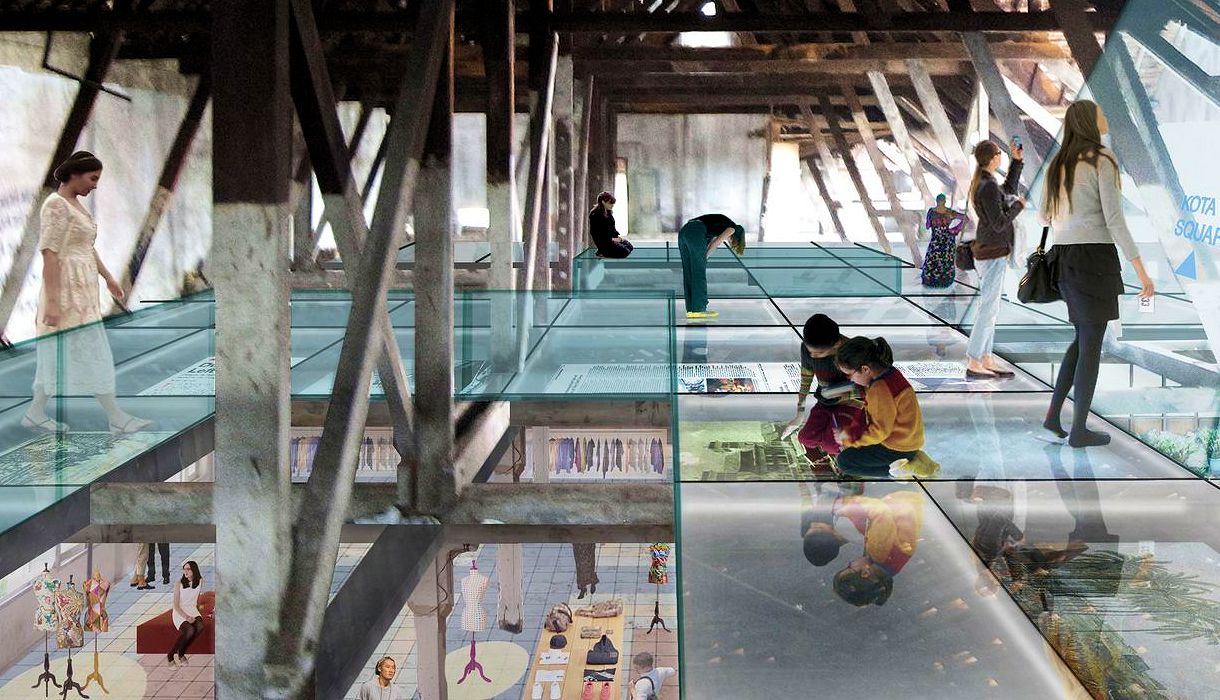OMA Kota Tua Jakarta
Batavia was established as a trading port in 1619. The Dutch, seizing on a moment of conflict between the ruling Banten Sultanate and Prince Jayawikarta about a relationship with the British, sacked Jayakarta and formed the colonial port city of Batavia. It was not until more than 300 years later, when the Dutch surrendered to the Japanese in 1942, that the city rapidly declined into disuse after buildings were vandalized and plundered for war materials. Following the surrender of the Japanese, Indonesia declared its independence from the Dutch in 1945 – Kota Tua has remained abandoned ever since.
Various efforts have attempted to revive the colonial district, all have suffered the same fate due to a lack of incentive for investment and crumbling infrastructure. Meanwhile, buildings are collapsing and 300 years of Indonesian history is gradually disappearing.
OMA was invited by Jakarta Old Town Reborn: Projects for the City to collaborate with Indonesian architects to study the district, a specific building – the Tjipta Niaga, and offer our thoughts.
Two reasons the district is defunct is there is no way to finance a full renovation, nor is the district connected by healthy infrastructure. The maximum allowable contract under the law is five years – an impossible duration within which to finance a renovation/restoration of buildings on this scale. The other is the lack of clean (canal) and connective infrastructure (transport).
Our ideas represented here are for the present conditions – conditions that present an opportunity.
We propose a matrix of possibilities, a place of collective energy where a diversity of institutions, residential programs, and small businesses form a pioneering community in creating a new evolution of Kota Tua, Jakarta. By subdividing the spaces within the Tjipta Niaga building (and throughout Kota Tua) rentable space is divided into smaller, more affordable spaces allowing faster return of investment. Self-sustaining, light architectural interventions (partitions, pods, roofs) are implemented instead of full-scale restoration.
Small scale interventions such as these could prevent what UNESCO fears for its world heritage sites – “Disneyfication”. Some preservation efforts turn what could have been historic vibrant parts of the city into theme parks exclusively for tourists – replica of the past, frozen in a period of time and divorced from a potentially vibrant context.
To counter this, we propose inserting new elements of architecture integrated and contrasted with the old. We propose protecting the past with new roof elements and seismic retrofit. We propose preserving the effects of time, through a careful removal and subtraction of layers to reveal a deeper past.
Rather than restoring and isolating Kota Tua, we propose to integrate and evolve Kota Tua with the rest of Jakarta – perhaps the very thing Batavia was missing from the beginning…
| |

|